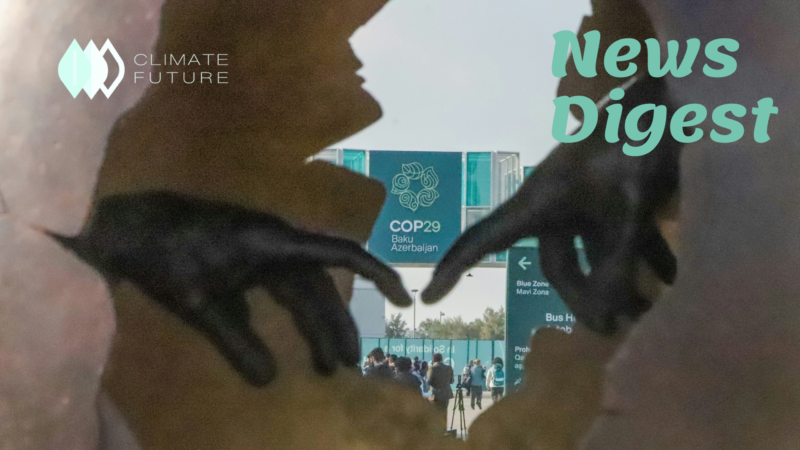Climate advocates demand stronger COP28 language on fossil fuels
The United Arab Emirates presidency’s COP28 draft language has sparked worries since it does not refer to the “phasedown” or “phaseout” of fossil fuels, a critical component emphasized by UN Secretary-General António Guterres and many other countries. Rather than this, the focus of the document is on “consumption and production of fossil fuels in a just, orderly, and equitable manner.” The United States, the European Union, small island developing states, and civil society organizations have all criticized the wording, claiming that it does not adequately address how urgent the climate situation is. Although the draft’s language is deemed inadequate, it contains voluntary initiatives like increasing the world’s capacity for renewable energy by 2030, quickly phasing out “unabated coal,” promoting zero- and low-emission technology, and providing climate funding. The clear pledges to phase out fossil fuels, the references to “oil” and “natural gas,” the heavy weight placed on affluent countries, and the fair distribution of adaptation measures are conspicuously missing. Disappointed with the weakening of the language on fossil fuel phaseout, members of civil society, particularly Harjeet Singh of Climate Action Network International, attributed it to outside pressure, mainly from the fossil fuel sector. Activists and some nations push for a more robust wording that accurately captures the severity of the climate emergency as delegates have discussions.
The past, present and future of climate change negotiation
The 28th Global Climate Summit (COP28), which ended recently in Dubai, United Arab Emirates, was a momentous occasion as countries decided to move away from fossil fuels to reach net-zero emissions by 2050 and keep global warming to 1.5 degrees Celsius. Established in 1992, the United Nations Framework Convention on Climate Change (UNFCCC) is the principal forum for international climate discussions. It has facilitated the negotiation of important agreements such as the Kyoto Protocol (1997), the Bali Road Map (2007), and the Paris Agreement (2015). The Paris Agreement expanded the duty to include all nations, whereas the Kyoto Protocol imposed mandatory carbon reduction responsibilities on industrialized nations. Critics point out that the UNFCCC has structural issues that limit its efficacy, especially when it comes to mitigation activities that are centered on nation-states. There are difficulties because of the cyclical change in administrations that affects negotiators and the inadequate participation of non-state entities including the commercial sector, NGOs, and academics. There are significant financial concerns as well; existing climate finance is thought to be unfair and wasteful. The promise made by developed countries to give $100 billion a year to developing nations for climate action has not been met. The recommendations are made to close the gap between international climate discussions and practical results: strengthening group efforts, improving the COP format, and including non-state players in official negotiations. With a united global community dedicated to addressing climate change concerns with sustainability, fairness, and inclusivity, the outcomes of COP28 are viewed as a chance to alter the future of COPs.
Assessing the importance of liquidity and climate risk in an evolving risk landscape
Investment risk managers used to low-interest rates and low volatility face previously unheard-of difficulties in the current market climate. In this unstable environment, where risk management procedures must be in line with investment strategies, active management is viewed as essential. More targeted and detailed risk assessments that take into account both top-down and bottom-up viewpoints are required of asset managers. This unstable environment’s explosion of variables raises both the possibility of winning and losing. Another reason for modification is a model risk, as the Covid-19 pandemic’s effects have made it difficult to use past data sources and necessitated modifying modeling strategies. The complexity is increased by climate risk, which also necessitates high-quality data and modeling techniques in addition to increasing external demands for improved reporting. The requirement for adaptability in a significantly altered environment is highlighted by recent crises, underscoring the growing significance of liquidity risk management. Important factors to take into account include social sentiment and the impact of social media on liquidity risk. It becomes problematic to handle fewer liquid assets in portfolios, especially for asset managers who have collected illiquid assets during the previous ten years. The significance of incorporating climate risk management into conventional risk systems and recalibrating models to reflect the present environment is emphasized in the essay. One notable development is cloud-native technology, which provides risk managers with scalability, flexibility, and easy-to-use data access. In this changing environment, an integrated approach that addresses multiple risks, asset classes, and cross-team communication is necessary for a more comprehensive risk management plan.
Crypto and Climate: A Sustainable Future?
A crucial topic in the world of cryptocurrencies is the environmental impact of blockchain technology, which is sometimes overlooked in favor of talking about market dynamics and financial prospects. The energy-intensive mining procedures used by cryptocurrencies like Bitcoin to validate transactions result in an astonishing carbon impact. According to the Cambridge Bitcoin Electricity Consumption Index, the annual energy consumption of Bitcoin mining surpasses that of whole nations. Players in the market are looking for answers as the environmental conundrum at the nexus of sustainability and cryptocurrencies gains prominence. One of the initiatives is to switch from energy-intensive Proof of Work (PoW) algorithms to more energy-efficient ones, such as Proof of Stake (PoS). The much-anticipated Ethereum 2.0 upgrade seeks to drastically cut down on energy usage. A growing trend in cryptocurrency mining is “green mining,” which uses renewable energy sources like wind and tidal energy to offset carbon emissions from mining operations. Still, there are disagreements. Some claim that mining employs a significant amount of renewable energy, citing the absence of context in energy consumption data. Climate change and cryptocurrency compatibility is still up for debate. Though worries remain, industry responsiveness and innovation provide hope. A responsible and sustainable approach is necessary to shape the role of cryptocurrencies in the digital economy, as highlighted by the emerging narrative surrounding cryptocurrencies and climate change. Investors at large are asked to exercise caution, and industry innovators are challenged to innovate while maintaining environmental stewardship. The pursuit of a sustainable coexistence is unquestionably worthwhile, even though the road ahead is unclear.
References



